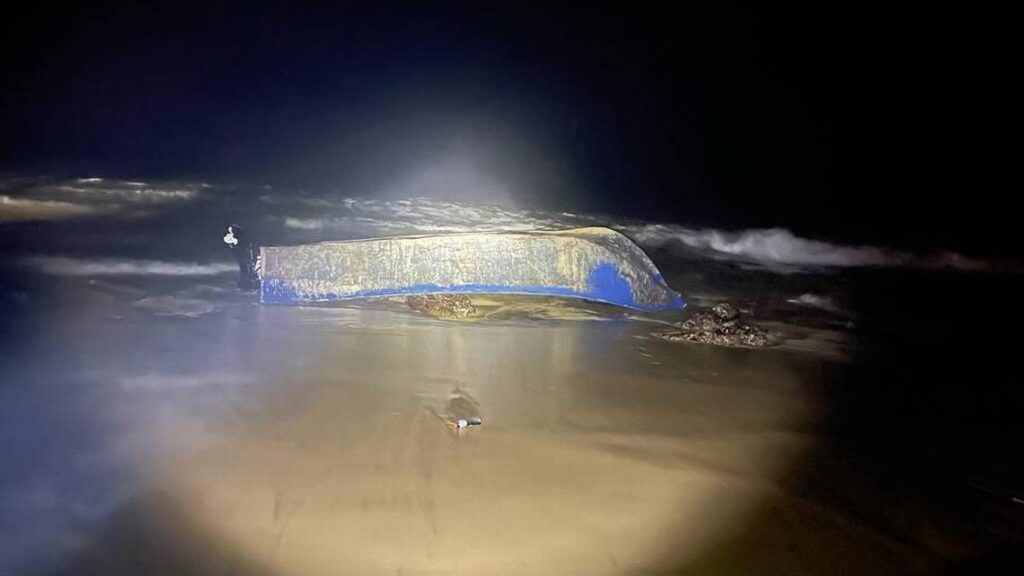SAN JUAN — A 3-year-old child presumed to be Haitian died Friday morning after a migrant boat capsized on the beaches of Rincón, according to local and federal authorities, the latest such voyage near Puerto Rico to turn deadly.
The director of Puerto Rico’s Joint Forces of Rapid Action, Col. José Rodríguez, told the Miami Herald that its maritime units had spotted a boat near the coast at around 3 a.m. The boat overturned when it reached shore and people began jumping out. Rodríguez said agents spotted the child and jumped into the water to save him. He was taken to a hospital in Mayagüez, where he was pronounced dead. The mother’s child was also a passenger.

As an increasing number of Haitians and Cubans take to sea to reach U.S. soil, federal authorities are seeing more deadly migrant boat voyages and reports of missing migrants. The rickety boat, known as a yola, arrived at Rincón at the beginning of surfing season and at a time when Puerto Rico’s northern coasts are rough.
Jeffrey Quiñones, the Customs and Border Protection spokesman in San Juan, said the boat is thought to have been carrying 25 men and eight women from Haiti. There was also a Dominican national and an Iraqi national on board. Two women were also hospitalized.
“This is a danger that is always prevalent,” Quiñones said. “The journey is very dangerous. In the area of the Mona Passage, a lot of things can happen.”
The Mona Passage, the strait between Puerto Rico and Hispaniola, is a hot spot for narcotics and human trafficking. Friday’s incident is the latest migrant voyage to turn deadly in or near Puerto Rico. In May a boat carrying Haitian migrants capsized near the tiny island of Desecheo. Eleven Haitian women drowned. Another five Haitians died in July when they were forced to disembark in the shores of Isla de Mona, an uninhabited island with no infrastructure that is a common drop-off for smugglers. Customs and Border Protection took the boat passengers for immigration processing to the Border Patrol station in the northwestern town of Aguadilla.
Quiñones said that the tragedy is a reminder of the risk migrants take on yolas, from the moment they get on board to the second they reach shore. He said it wasn’t the first time a boat had capsized during landing, and that people have previously perished this way. The boats are heavy, and migrants, who sometimes don’t know how to swim, get trapped under the hull.
“The captain wants people to throw themselves on the shore. People are desperate to get off. The yola starts moving from side to side, and with the waves it capsizes,” he said.
Two months ago, Customs and Border Protection in Puerto Rico came across the body of a man under a yola with about 198 pounds of cocaine worth $2 million nearby. While the case was different because it involved drug trafficking, it illustrated how dangerous the rickety boats used to cross the Mona Passage are, the spokesman said. Just last week, the U.S. Coast Guard rescued 34 Haitians abandoned by smugglers on the cliffs of Islote Monito, a crag with no coasts that is even tinier than Isla de Mona.
[wpedon id=23995]By Syra Ortiz Blanes/MIAMI HERALD
Syra Ortiz Blanes covers immigration for the Miami Herald and El Nuevo Herald. Previously, she was the Puerto Rico and Spanish Caribbean reporter for the Heralds through Report for America.




